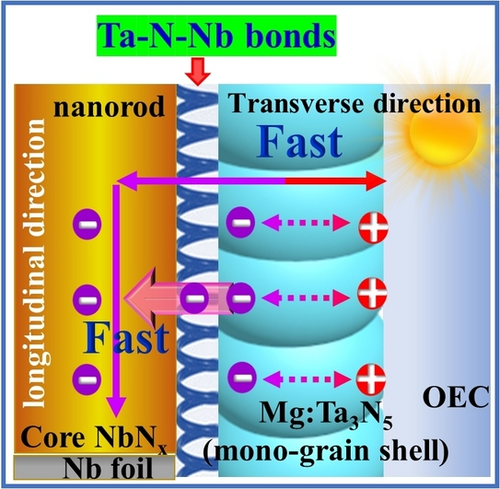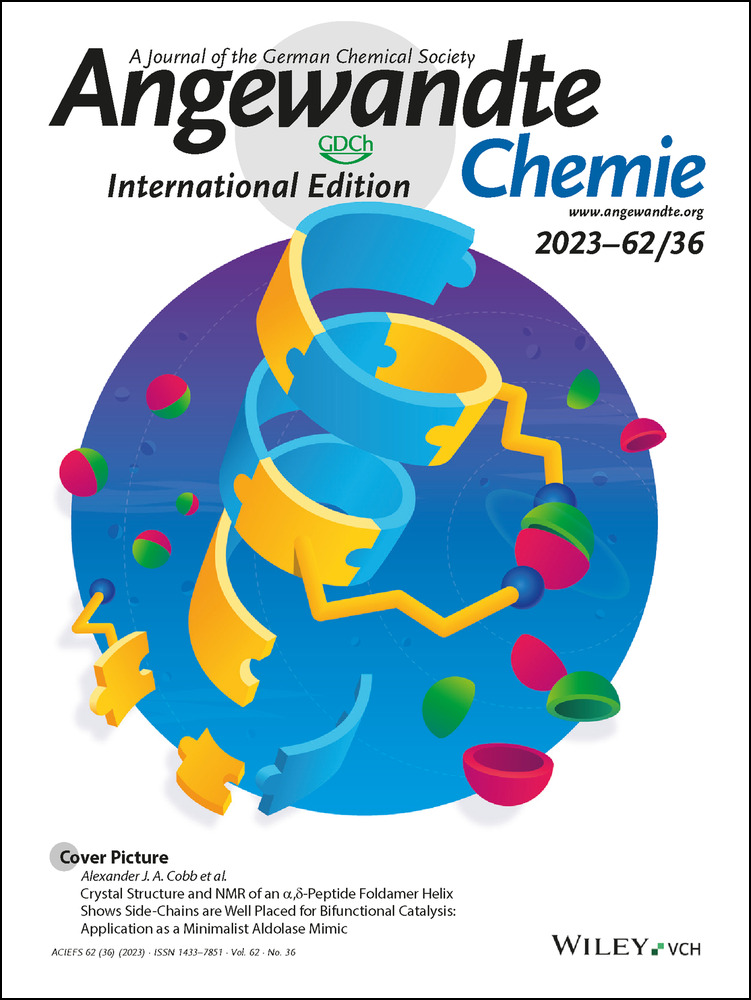Enhanced Spatial Charge Separation in a Niobium and Tantalum Nitride Core-Shell Photoanode: In Situ Interface Bonding for Efficient Solar Water Splitting
Graphical Abstract
Highly efficient electron/hole separation and collection has been achieved by in situ interface bonding of an ultrathin high-crystallinity Ta3N5 mono-grain shell and conductive NbNx nanorod core. The photoanode attains a photocurrent density of 7 mA cm−2 at 1.23 V RHE with a Ta3N5 shell thickness of less than 30 nm.
Abstract
Tantalum nitride (Ta3N5) has emerged as a promising photoanode material for photoelectrochemical (PEC) water splitting. However, the inefficient electron-hole separation remains a bottleneck that impedes its solar-to-hydrogen conversion efficiency. Herein, we demonstrate that a core–shell nanoarray photoanode of NbNx-nanorod@Ta3N5 ultrathin layer enhances light harvesting and forms a spatial charge-transfer channel, which leads to the efficient generation and extraction of charge carriers. Consequently, an impressive photocurrent density of 7 mA cm−2 at 1.23 VRHE is obtained with an ultrathin Ta3N5 shell thickness of less than 30 nm, accompanied by excellent stability and a low onset potential (0.46 VRHE). Mechanistic studies reveal the enhanced performance is attributed to the high-conductivity NbNx core, high-crystalline Ta3N5 mono-grain shell, and the intimate Ta−N−Nb interface bonds, which accelerate the charge-separation capability of the core–shell photoanode. This study demonstrates the key roles of nanostructure design in improving the efficiency of PEC devices.
Conflict of interest
The authors declare no conflict of interest.
Open Research
Data Availability Statement
The data that support the findings of this study are available from the corresponding author upon reasonable request.





